
WE HAVE A USB FULL OF DOCUMENTS
You can’t detach an archive from politics and the long history that formed it.
All contemporary phenomena must be understood contextually and historically, in relation to the power structures — or institutions — that shaped them, and are still shaping our understandings of ourselves, and of our times.
Is it possible to archive responsibly?
What would that practice be? How do you sensibly collect, understand, and then *structure* memories?


From the beginning, the origin.
Sovereignity, dominion, authority.
- The origin of "archive" is complex, and its meaning has constantly been evolving since it first arose.
- The concept of the archive is itself hard to archive
An act or instance of commencing, beginning.
A command or mandate.
- Commencement/commandment, the chicken or the egg ?
- Was the archive already an archive before it was archived?
A domicile, an address.
Residence of the superior
magistrates, the archons,
those who commmanded.
Ruler [Greek, *arkhein* to rule]
One of the 9 chief magistrates.
of the city states.
- In the beginning, the word archive referred to Archons, who would file and store important documents in their own homes.
- According to Aristotle, the power of the king first devolved to the archons, and these offices were filled from the aristocracy by elections every ten years.
- The Archons were entrusted by the general public to store important documents.
- They were guardians of these documents.

MediaWiki
MediaWiki, the basis for Wikipedia and most other MediaWiki websites, is a free and open-source "collaboration and documentation" platform engine. Wiki markup is the language used to write content on a wiki website.
MediaWiki served us as a platform that allows many users to handle large amounts of image files and metadata collectively. It features helpful tools to do so, such as page forms, semantic queries and an API.
* List item
** Sublist item 1
** Sublist item 2
Study of the nature of existence
or being as such.
The science of law or laws.
- An archive holds both ontological aspects (related to the nature of existence) and nomological (law-like) principles.
- Archons were considered to possess — and therefore possess the right to make, and represent — the law.
Method or theory of interpretation.
Concerning interpretation.
- The functions of hermeneutics are: "the functions of unification, of identification, of classification."
- "Legitimate hermeneutic authority" :
The one who holds the archive (the data) is in the position (and has the authority) to interpret it.
Establishment at
a place of residence.
- The discourse produces the knowledge, the understanding of it.
- A concept doesn't exist until we say it does.
A decree or proclamation
issued by an authority,
and having the force of law.
- The passage from the domestic to the *public = property + the edicts*.
- Still a private matter even though made public — still stored in private places.
- Private > Public > Nonsecret?
- The "public" archive VS where it is held : in private homes.
- Archives change from a private — as in the homes of certain individuals (archons) — to a public matter.
- Archons are entrusted with the interpretation of the documents they were collecting — the documents that also determined the law.
Getting a first impression
When having first contact with the material that will constitute your work, getting a quick first overview and comprehending the scale of it can influence the development of your process drastically. The reason for this is that, especially in time-limited projects, the first impressions significantly affect or even determine the creative and conceptual design that you decide for. Therefore, the fist contact with the material should be made with caution and calmness.
In order to get a good overview of the archival material, when we first encountered it, we divided the documents, skimmed them and created a polyptych summary that also served as a basis for a collective discussion. Beforehand, we had trained our understanding of text in order to be able to process the material effectively.
Code of conduct
We created a code of conduct to make sure that we were on the same page about the fundamentals of our regular interactions as a group. It served as a reference on how to approach each other and helped prevent avoidable, unconstructive conflict.
- Listen, don’t interrupt.
- Listen actively - Show that you’ve understood.
- If you don’t agree, you can still accept others opinions.
- When negotiating, be convivial (be nice!).
- Ask what is needed before you give.
- If personal issues arise, try to address/resolve - if not: park it for the sake of the project.
- When you don’t understand, ask for help (be humble).
- Be aware of the space you take. (Check temperature - silence is OKAY!)
- Before making a decision, check with others (might be an unhappy average).
- Speak for yourself and your own experience (see links: nonviolent communication)
- Use „AND“ instead of „BUT“ and „HOWEVER“.
- These rules can be modified by consensus.
Obtaining background knowledge
To develop an understanding of a complex topic, basic research - on/offline - is the first necessary step to take. Talking about the facts as a group and/or collectively reading texts on the topic can help in the process. If possible, the best way to develop a deeper understanding is to get in touch with experts and/or witnesses. In the best case, to conduct an interview or even organize a meeting as a group or a workshop on the topic. Also taking as many different points of view, even if you don’t agree with them, is an imperative to create a differentiated opinion on a complex matter.
The herme(neu)tic tradition
Anything that has
mysterious or unknown
internal functions or mechanisms.
- Archive as a blackbox. The mechanisms within are invisible, visible only to the privileged.
- We see the inputs and outputs but not the actions within. Hidden processes of interpretation.
- The archon imposes the law as he has interpreted it, but we folks, have no idea on how he came to the conclusions).
τόπος (place, locality)
+logy (study of).
*Computers* The arrangement
in which the nodes of a network
are connected to each other.
- Physical archives were made public but they were not necessarily promulgated — neither were they accessible to everyone.
- It was a very enclosed and untransparent matter — the internal processes were not disclosed.
The intersection between
the place and the law.
- The ones that interpret these documents are the ones making the rules.
- The connection between property, knowledge, and power is established.
Polyptych Summary
Traditionally a polyptych is a painting, split into multiple sections. In this case, we used the idea of a polyptych as an exercise that enabled us to get a first impression of the archive material.
Tesseract
Tesseract is a free "optical character recognition" (OCR) engine, and supposedly was the first one of its kind. It recognizes text within images and outputs this textual content in either a text file or a PDF in which the text is selectable and searchable.
Tesseract is essential to provide a comprehensive overview when working with a big batch of scanned documents. The quality of the results depends very much on the quality of the documents and thus can result in the need for large-scale revisions. More concretely, not all images that contain text seem to be readable by Tesseract. Some images might be damaged (faded ink, strange font, etc.), therefore the recognition does not afford precise results. This is when humans come back into play, to edit and correct the inaccuracies, to proofread the machine.
Property x Knowledge x Power
- To own and share the knowledge is to own the power.
- Archiving comes from, and gives, a position of power.
- The archivist always holds the power to frame the material.
- The archive is affiliated with the institution or power, which is never neutral.
- "Archon" also has a negative, tyrannical connotation.
- The "archive" (mostly considered as a neutral instance) actually comes from a rather authoritarian history/concept.
- Archiving as a very patriarchal practice.
- The patriarch refers to the material/book/law text, as if he was a servant of it, and says, "It's not my fault what’s in it." lol.
- The arrogance of power.
Supreme authority or power.
- Content must be categorized in order to be called an archive. It has a particular set of procedures, it strives for a permanence.
- The link between the right to archive and power, as well as the right for people in power to select and interpret, doesn’t sound like a good idea.
- Don't we all strive for permanence?
Categorizing the material
To be able to navigate the material, you have to make connections in between the documents, get an overview of all of the existing data and from this develop a structure for the archive. We chose to categorize the material with content and format related categories.
To start, each person skimmed a portion of the archive for which they were responsible (as decided when dividing the work). During this process, properties that we considered relevant and/or seemed to be recurring throughout the material were collected for each document. Furthermore, all categories and properties were gathered, discussed and reduced to the necessary. The thereby generated set of categories and properties was then applied to the documents by re-skimming them. The categories and properties were later used for the upload of the material to MediaWiki using page forms, which gave structure..
- Paper
- Interdisciplinary Doctoral Fellowship
- Marxism
- Capitalism, socialism, class structure
- Readings, literature
- Soviet Union
- Economy
- Peoples Republic of China
- Socialist Republic of Vietnam
- Reforms
- Revolution
- Revolutionary armed struggle, revolutionary army
- Street fighting
Page forms (MediaWiki)
Page forms is an extension that provides a MediaWiki instance with templates to create pages, edit pages and add query data to them.
We used these forms to implement the same categories for each document and assign them their collected properties.
|Title=documenttitle
|Date=1987/11/01
|Part=
|Partof=5
|Creator=
|Format=Paper, Manual
|Event=
|Topic=Resistance Tactics
|Language=English
}}
=OCR=
<nowiki>
Original file name: filename.pdf
</nowiki>
to be determined
Individuals don’t know they are going to be archived. The act of archiving clusters them together even if they didn’t intend that. For the outsider, the material that they produced can seem like some kind of collective work that was created in a certain time span, maybe even with the aim of being in some sort of a bundle. We collect it all together under a theme, title or event and hope it does justice to the writers, makers, editors, etc.
The intent of the act makes it all come together in to form an “archive”, a very general word. This process can go in many directions, it is almost arbitrary. I came across an article called “Archive, Archive, Archive!” by the artist Julie Bacon. The article speaks about archiving in the postmodern art world. I felt like it described some of my feelings. She writes: “Surveillance practices mark our time, and people are aware to caring degrees that they are documented, and that bodies of information exist that pertain to them but are remote from them”. When you write a poem, take a photograph or write a political article arguing against your government, do you always think about what will happen when it gets public? Can you know that someday someone else will use this material in ways that you maybe didn’t intend to?
“Does inclusion liberate us? Does the act of putting things on display empower us or do away with hidden forces, put them under control?”
In this process there are more questions than definitive answers. Reading, tagging and sorting the material means you spend a significant amount of time with the archival material. A relationship is formed and with it your own perspective. When a third party is dealing with the material it imprints itself in it.
How should we observe the archive? We are not seeking to “improve” it, but merely to represent the idea behind it and make it accessible to a wider audience. We were given a purpose, willingly or not, so we joined forces, had many conversations, discussions and arguments. We tried to make something that will balance all the different elements that were effecting us and the success of this process can not be measured by regular standards. “Drawing the purse of these thoughts together, what glitters is the poetic-political value of archives, the fact that their aesthetics seek of, and more than that are ineffably bound with, subjecthood: their imagination is a form of agency, their agency colours our dreams, by that I mean our actions.” The time spent with the archive is a significant parameter. Things that were clear to us at the beginning, could have completely changed by now. The more you dive in, the more you know and the less you realise you don’t know. “An awareness of the relationship between practice and ideology is key. The choice of what we do and how transmits attitude, as much as the content and the motives that we are owning up to or claiming”.
I find myself asking more question, not trying to give answers. I direct them to myself, my colleagues or into space. If we had more time, would the number of questions increase or decrease? We search the past to answer questions about the present and the future. The fact that the archive was created makes it a part of the present and future. It can be a tool for answers but for much more questions as well.
This was written based on my personal experience and in relation to the article “Archive, Archive, Archive!” By Julie Bacon, Circa Art Magazine, 2007.
A freudian Impression

A description or an analysis
of a structured entity,
showing the relations among its components.
- History does not write itself, it is written by people — almost exclusively by a dominant population.
- Could it be co-written?
To rid of mystery
or obscurity, clarify.
- Psychoanalysis as a tool to look at the non-disclosed processes of interpretation.
- By questioning a system of belief, you can come closer to its origin, and its conditions of interpretation, of curation.
- Through gaining understanding, some of its power transfers to you.
- A subversive act: instead of focusing only on the content of the archive, one interprets the maker, therefore, undermines/questions their authority.
- Things can be understood contextually and historically, in relation to power structures and institutions that shaped their own concepts.
- We can’t detach the archive from politics and the long history behind it.
- History, for example, being so very masculine and therefore the archive being so biased and excluding.
- Also, the concept of the archive is biased towards written cultures and languages.
- The fact that for a really long time, and still today, it is harder to archive oral cultures, and therefore cultures that archive themselves in text are usually dominant.
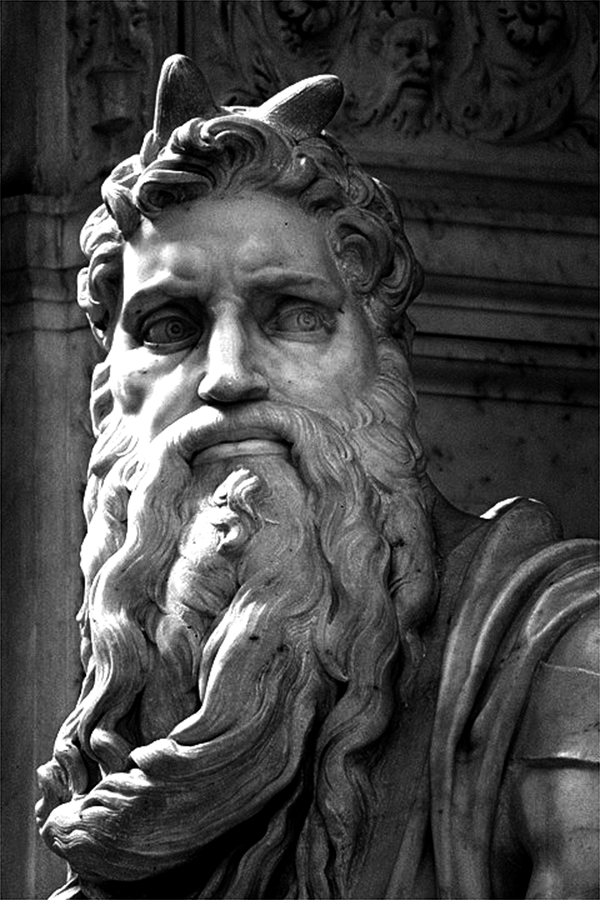
A usually formal, solemn,
and binding agreement.
A written agreement or promise
- The intentions behind an archive can be dangerous if their objectivity is taken for granted.
- Is the perpetually reflexive state of a human being possible?
- Cognitive philosophy + post-structuralism = clash boom boom!
- To question a dominant archive’s legitimacy can threaten its authority.
- It exposes its subjectivities.
- It challenges its supremacy.
- What are the desires at stake? Who are/is the archivist.s? What are their motives? Political views? Class? Where are they from?
To scatter widely.
The opening of a subject to
widespread discussion
and debate.
- Don't take information for granted — question its context and the reasons behind the process of selection.
- Disseminate — consider all possible influences.

BASH script
A BASH script is a series of commands stored in a text file. It contains commands that one would use in the command-line.
We used BASH scripts to automatically upload batches of files including metadata to the Wiki.
pagename = f'{dirname}-{_file}'
print_colormsg(pagename, level='ok')
page = site.pages[_file]
if page.exists:
url = page.imageinfo['descriptionurl']
print_colormsg( f'Already exists in {url} Will NOT be uploaded', level='warning')
else:
img_smw_prop_val = smw_propval_template.render(
title=args.title,
date=args.date,
part=n + 1,
partof=len(lsimgs),
creator=(', ').join(args.creator[1:]),
organization=(', ').join(args.org[1:]),
format=(', ').join(args.format[1:]),
event=(', ').join(args.event[1:]),
topic=(', ').join(args.topic[1:]),
language=(', ').join(args.language[1:])
)
Image Magick
Image Magick is a free command-line tool. It comes with extensive functions to edit and convert images.
We used Image Magic to convert multipage PDFs into individual JPGs to upload to the Wiki.
1. Handling archival material: original v.s. digital reproduction
Dealing with archival material when its impossible to interact with the original

The following texts are intended to function as short insights on what one might encounter when handling a digital archive, especially without having the opportunity to interact with the original physical material. It might (since in my case at least it involved sensitive, sometimes explicit material) lead to a disconnected feeling towards the content; a disconnect that I could not quite put into words. To face this complex relationship, I started to research the following notions:
1.1 Paper as a medium
1.2 The repeatability of print (and why we trust it)
1.3 The human relation to the physical copy
1.4 The materiality of paper
1.5 The ambiguous state of scanned documents
1.6 The aura of the original
1.7 The 'clumsiness' of scanned material
1.8 How format and layout create memories
1.9 Activating archival material
1.10 Scanning as an act of resistance
Key questions in this section:
- What is the message of a simulation of a medium?
- How does scanned material relate to experiencing emotional and physical distance of content?
1.1 Paper as a medium
Even before the Gutenberg* press changed the world, publishing on paper already had a huge impact on the way that knowledge and information were spread. With the current advent of digital publishing possibilities, the meaning of paper as a medium has changed. Since our normality is to read digital and volatile screen-based content, questions that arise are the following: How does this affect our relation to the physical material that is still everywhere around us? How does it shape the collective memory? What is its importance in publishing subversive (activist) content?
In The Myth of the Paperless Office (MIT Press 2001), Abigail J. Sellen and Richard H. R. Harperin refer to the paper medium as a 'physical conductor': "Through the gestural act of passing the printed product from one person to the next, paper may be seen as a conceptual ‘conductor’: able to transfer the metaphorical ‘energy’ it contains." What does this mean in the case of handling and distributing scanned (archival) material? What is 'the message' of a digital representation of a medium? Does it reduce this so-called metaphorical ‘energy’?
*Gutenberg press revolution In the mid-15th century, Johannes Gutenberg of Germany introduced a new concept that would make the process of printing books more efficient. With his invention of the printing press, which utilized movable text, thousands of pages per day could be printed. This process increased development in science, art and religion, increasing the amount of shareable knowledge and decreasing costs so more people had access to it.(source: https://www.whipcord.com
1.2 The repeatability of print (and why we trust it)
The human attachment of the tangible is nested in our habits of consuming information by reading. Print on paper has a history of significantly contributing to spreading knowledge, opinions, news reports, counter-arguments, and therefore creating collective memories, a trace of time captured within the material. As Marshall McLuhan noted in Understanding Media:
“Repeatability is the core of the mechanical principle that has dominated our world, especially since the Gutenberg technology. The message of the print and of typography is primarily that of repeatability.”
The first book that Gutenberg printed was, in fact, the Bible. Here, technology made a significant contribution to the spread of religion across the world.
And in spite of its fragile material characteristics, paper can be around for a very long time. When information is printed, the content never changes. Only our interpretations do. Comparing it to digital media that can be found on the web, print is much more stable and static and faithful. But if influential technologies change our habits, let's assume this sense of stability and faithfulness is currently changing since screen-reading is already the standard for many.
1.3 The human relation to the physical copy
So, why are we, in a society which is almost entirely networked and screen-based, still printing and transforming digital text into physical copies? Print has some unique characteristics that are still not overthrown by any other format or medium. The space that printed documents, books, archival material, etc. takes is real. It has mass and a certain weight. The more you store, the less physical space you have available.
This is in fact fundamentally different than the materiality of the text that appears on your screen or a file of a document that is stored on your hard drive. The sensory perception, intrinsic to human beings, is not something that is simply going to disappear. This feeling of disconnect, caused by a distortion the sensory perception, is what I encountered while handling the digital scans of archival material. (In my case, the contents of the archival material was often explicit, graphic, politically sensitive and sometimes highly personal in nature, which most likely made this relationship even more complex.)
1.4 The materiality of paper
There is still no electronic device that fully closed the gap to paper. Paper is foldable and can quickly adjust to different reading methods and activities. It's easy to share it in person which creates human encounters. It's very flexible for note-taking and juxtaposing to other material.
No matter how high the quality of the reproduction is, some essential questions can be hard to answer when the physical original is absent. For example what type of paper, printing techniques, ink, etc. were used. All these properties can give more much detailed information on the time in which the original was produced, what the political state was back then, who produced it, etc. Material such as paper has significant 'flaws': it's very much prone to decay, amongst other weathering risks. When archiving, conditions such as temperature, humidity, and fire safety should be optimal for the preservation of the material.
Scanning seems to be the most preservable option available now. While the physical conductor is dematerialized or lost, the message and the information that the material holds are preserved. What does this mean for the metaphorical ‘energy’? Does this get lost as well? Or will this be saved and therefore stored into the digital reproductions?
1.5 The ambiguous state of scanned documents
In a way, the image of a scan is ambiguous; a scan is a representation of the original, tangible material. A scan finds itself somehow trapped in between the physical and the digital space. It may nonetheless reveal something about its age, the interactions it had with humans over time. A scan is something that you cannot touch, smell, fold or burn. But the mere presence of a scan proves that the original material exists, or existed. It is a carrier that enables information to be made visible, which in turn activates a feeling of trust.
When we face the material by only seeing these scans on our screens, a desire for space emerges. We wish to experience a situation of using an actual magnifying glass instead of a zoom function on your computer to enlarge a certain part of the material, ending up seeing fibers instead of pixels. The physical act of going to the material allows different ways of intuitively interacting with the material, instead of having to use a digital interface full of symbols of tools to explore and navigate through the material. Digital spaces leave less room for a messy, intuitive approach that would, in turn, bring different results to the process.
1.6 The 'aura' of the original
Because print as a carrier for text has been around for so long, it 'has always been perceived as a stable extension of human memory', we are used to the fact of believing that once a text is printed, its content is fixed forever. We interpret it as 'being real and permanent'. It somehow obtains an 'aura'. The reproduction is like a ghost of the aura; trapped somewhere in between the physical and the intangible world.
On Wikipedia, it is stated that "when the word 'aura' was used by the culture philosopher Walter Benjamin to compare an original artwork to the reproduction, he said that "even the most perfect reproduction of a work of art is lacking in one element: Its presence in time and space, its unique existence at the place where it happens to be"; and that the "sphere of authenticity is outside the technical [sphere]" of the reproduction of artworks. Therefore, the original work of art is an objet d'art independent of the copy; yet, by changing the cultural context of where the art happens to be, the mechanical copy diminishes the aesthetic value of the original work of art."
1.7 The 'clumsiness' of scanned material
In terms of quality, usability, and readability, a scan can be perceived as a 'clumsy'. When a document is scanned to retrieve only its textual content, present visual information can be redundant, disruptive and highly impractical for processing. However, these additional visual presences can in fact be perceived as its strength. An image of a scan usually testifies of the manual act that was performed in the creation of the image - it can reveal extra visual traces such as folds, crooked frames, and even hands trying to keep the pages flat while pressing the material against the glass surface of the scanner. Compared to the plain (or OCR-ed) text, it reinforces the fact of the physical existence of the original.
Scans, compared to plain text, also add episodical data such as folds, pencil underlines, marginal notes, censorings, spills, signatures, stamps, stains to the original content. This uncovers an intimate history of the material, its life from before it was scanned. It is a narration that tells us about everything the material had to go through to be preserved - or: not to be destroyed.
1.8 How format and layout create memories
To some extent, our visual memory can be used to retrieve information from a document. We can remember a certain layout, a typeface, color use, type of paper, which connects the specific document to episodic data, related documents, a time in history, etc. A certain format or layout can tell us a lot about the content. Some documents can be visually distinguished from others, based on our knowledge of a tradition of a specific (historical) expression within a text, a poem, an article, a letter, a report, an academic paper, etc.
This can also be applied to digital publications and media. Websites, email conversations, blogs also have certain recognizable visual characteristics that can be stored as well. This also provides more context on how the information was produced and what the intention was. (As well the source code can reveal a lot of information.)
When classified digital documents were released during events that took place around Wikileaks, VAULT7, etc, most of the content that was published was embedded (showed) in its original format. Even though it had all the advantages of digital processing options, the plain content was not simply extracted from the source material. Layout, headings, layout, typographic elements were left to add a layer of trust to the textual content. Sometimes, even information such as document numbers or black blocks that censored information was added. Also, a lot of emails were in fact printed and scanned. When converting digital text into a physical medium and back it almost creates some kind of hyperrealism: something that is more real than the original. (Is there, in the case of documents that were originally created digitally, an actual difference between the original and a reproduction? Can a digital file even have an 'aura'?)
1.9 Activating archival material
Often, out-of-print material and limited small press editions are somehow hidden in small institutions and private collections. These places have a lot of specialized knowledge about the contextual, historical and other substantive information of their material. Besides that, it is also important for their local cultural environment that the physical material is located in the place or region where it was originally produced and spread. Yet these collections are mostly unavailable online and therefore cannot be used as public sources of knowledge, they are unavailable to the public or hard to access. Often, the reason for that is the absence of a suitable platform for their dissemination or the limited financial resources available. In some cases, owners don't know how to handle material that is sensitive due to a political climate or censorship.
1.10 Scanning as an act of resistance
As we can learn from history, in times of political change the freedom of the press can be under pressure and can even lead to censorship. In these circumstances, scanning and (anonymous) publishing can be an act of resistance. Digital scans of physical documents can be used as a legit source for articles to prevent whitewashing, which Wikipedia describes as
"to gloss over or cover up vices, crimes or scandals or to exonerate by means of a perfunctory investigation or through biased presentation of data".
Archives that contain marginal (forgotten) documents are essential to keep a collective (cultural) memory alive. There should be no threat to them being erased from history.
Here is why the availability of a (preferably) high-quality digital reproduction is important. It greatly increases the accessibility and reduces the need to visit the location where the physical original material is kept. This is also beneficial for the preservation of the material since physical handling can be risky: documents can get lost or destroyed. Intentionally or not. Although not entirely safe - scanning and storing digitally also reduce the dangers of a collection being endangered/threatened by the forces of nature.

PARASITES
Language is never just there, never neutral, nor innocent. Words are actions.
Having a multitude of perpectives on a subject will broaden your understanding of it:
iterrupting can be a tactic, a tool to narrow down the panorama, and shape it to their interests.
Not being interrupted is a priviledge, a luxury. If you are constantly being interrupted, you will have have to deviate to be heard. Propaganda and censorship are constantly trying to limit the fair distribution of communicating ressources. Authority controls resources, and will try to take down any content advocating for political dissidence or discordance. Who gets to articulates the laws? Who articulates the memory of it ? Don’t forget this.
Speaking up is taking action.
How do you publish in times of such political urgency ? What do we have to protect ourselves about ? Who from ? For how long ? And what tools do we need to do it ?
INFORMATION SOURCE>>channel
>>RECEIVER

- Communication is crucial.
Act or fact of communicating.
Interchange of thoughts
or opinions...
- Language is never "just there", never neutral or innocent. Using words is taking actions.
- Communication is the responsibility of decision!
- Can someone avoid their responsibility by not communicating at all?
- One can also avoid it by communicating!
Any set or system of such symbols
enabling people to communicate
intelligibly with one another.
- Just like with the archive, language can shelter and conceal itself.
A gesture, action, or sound
that is used to convey
information or instructions,
typically by prearrangement
between the parties concerned.
*computers* A path for the
transfer of signals or data
within a computer
or between a computer and
its peripheral equipment.
- Information source > desired message > signal > receiver.
A system of signals
used in transmitting messages.
A systematic collection
of regulations
or rules of procedure.
- The transmission of the desired message depends on the source, the signal, and the destination.
- The receiver and the transmitter have to understand the same code.
Semantic queries
While lexical search returns literal matches to a search request, semantic search "understands" the query. When compiling the search results, this search procedure relies on previously entered, definitive, metadata information and thus usually returns more accurate results. Multiple requests can be combined to create more complex queries. There are two different factors to the queries: which pages the search is based on and which information is obtained from them. WikiMedia uses a simple semantic language "Semantic MediaWiki"for this.
We used it to selectively query the previously entered content using meta data.
[[Located in::Germany]]
|?Population
|?Area#km² = Size in km²
API
An API (Application Programming Interface) is an interface that enables external programs or systems to communicate with the software. The API defines how to access and how to define requests. Some APIs are created specifically for certain programs, others follow industry standards.
We used MediaWiki's API to organize and bundle a large amount of material and later in the process also to export the search queries from the Wiki user interface. Then, using query2html, we converted them to HTML.
*NOISE*
To change something into a system
for sending messages secretly,
or to represent complicated information
in a simple or short way.
To discover the meaning of information
given in a secret or complicated way
or to understand the meaning
of a word or phrase
in a foreign language in the correct way.
-
"Every such system contains noise."
A term used in the communications field
to designate any outside force that
acts on the transmitted signal
to vary it from the original.
- Information source > desired message > signal + noise > receiver.
- Noise can prevent the information from getting through intact.
- The transmission can change the message.
- The encoding/decoding process - can blur/change the message.
-
"Let's take painting as an example of a signal transmitting a coded message."
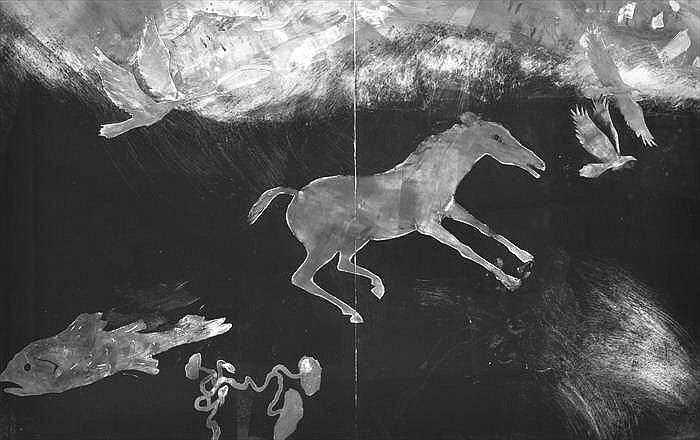
- Information source = painter’s mind and experience
- Signal = the painting
- Receiver = those who see the painting
- The receivers' interpretations of the signal (here, painting) will depend on the noise.
One's origin, education, experience,
etc.,
*fine arts* The surface against which
represented objects and forms
are perceived or depicted.
- Background noise.
- Noise does not necessarily mean sound.
- Noise is everything that leads to the interpretation of the painting:
the eyes, and nervous systems, and previous conditionings of those who are watching it.
- The background of the receiver might sometimes be so different from the transmitter’s background that understanding the intended meaning may be challenging.
Static website
A static website, the opposite of a dynamic websites, is a website with unchanging content, which is mostly written in HTML and outputs the exact same content to each user. Benefits of this model are the lack of dependencies and increased security and performance.
A static website was used to publish the archive.
Python
Python is a highly abstract (high-level) programming language in which logical and clearly structured codes for projects of various sizes have been written since 1991. It is equipped/comes with a significant amount of libraries that simplify complex tasks.
We used the Python library Mwclient to interface with the MediaWiki API in order to extract the results of semantic queries.
query2HTML
Using the MediaWiki API, Python and Pandoc we converted the results of semantic queries to a static website.
TITLE UNKNOWN

Not all the meanings can be constructed rationally.
Excuse the wind. He has no control over his actions.
One of my friends said that we can blame the wind for everything that is going on now. This chaoticism, this unpredictability of the directions that things are taking, that we are taking - as a globalized entity.
And I wonder a lot about this - multiple organisms constructing one, a global subject (maybe a westernized/first-world subject, governed, disciplined and regulated by political apparatuses that are the slaves of this abstraction of capital, so are we the slaves. Control exerted over a global mass.) [Foucault, biopolitics] We always exclude, trapped in a bias of our own privileges. The unthinkable Other does not constitute this pseudo-global entity humanity is. The process of somehow disabling humanity in its whole/as a whole has always been present.
The wind comes here as a good metaphor on the unpredictability of how things will go. Causality that we can't plan or understand. The scope of affairs is now too big for anyone to be able to comprehend it fully. There is no after. There is no going back to how things were. There is only an uncertain continuation, conditioned by the deterioration of our systems, infrastructures and perceived stability. (One thing that I do count on - heavily - is the revaluation of human contact, communication, vicinity, connection, solidarity and empathy - born in the synapses between individuals, growing over the cracks of systemic repression whose interests lay in the management of death - struggling against the death of capitalism, as we know it.) [Mbembe, necropolitics]
And the constant that remains is belief.
The wind blows from the North, East, South, West and North-East, South-East, North-West, South-West. From all the defined directions of the sky and the combinations in between them. The liminalities and the divisions within abstract constructs constitute what we believe in.
I said once in a song of mine (maybe it was a poem): "Mathematics give me a sense of meaning, when emotions fail." And, this is my recurrent observation of humanity in its interactive potential, it does not have the space to stretch, branch out, take over. Rationality, the discourse of logos, the utter need to understand, to grasp, to clarify and to stabilize is taking the lead and, while doing so, dismissing all of the other potentialities of human nature. Sensation, emotion and all their derivatives that exceed an individual and find their place in relationality, reinforcing the translucent material that holds us together. To make political rhetorics passionate!?
Abstract constructions such as border, nation, money - and so many others. Collective imaginaries, crude mental infrastructures that seemingly bring us together. What do they actually do? A raw deconstruction of the mere possibility of us being at the same space, same time, combined.[How does it feel?] To be a collective organism, a massive organic entity. And then these building blocks of material of our realities just get scattered all around the consequences of some mischances and bad decisions from before our times.
I see now three children on a balcony, holding guns. They are observing carefully, searching for their targets - aiming and shooting. Playful game, is it a pigeon or a person who disobeys the rules? The regulation of the masses is exercised by its very particles. Power is dispersed, diffused. There is no king, no tyrant we can point at with our fists and run towards in wrath. Who to rebel against? Against the part within ourselves that is obliged to follow some repressive structure of obedience?
It is this silent communication that happens. How animals feel the earthquake coming, there is something in the air that makes them nervous. And the birds are up in the air, flying all around, releasing sounds that only their peers can understand, we have no idea what they are saying. [Didn't Adorno say something like: Brave are the ones who allows themselves to understand the language of the birds. ??? They know stuff.]
Language. Meaning. Communication. Understanding.
And then the doors close and they open suddenly. The doors of meaning on the verge between understanding and oblivion. Somewhere in between, always somewhere in between. Collective meaning-making. Plurality of voices in the voice of the collective organism. So silent it seems.
I talked to a friend yesterday, she is a gemini, she has this problem - it was funny, it is funny how we might boil down our concerns onto our personal horoscopes. Again, an abstract construction that wants to help you understand things, and then they get even more complicated.
The world is foreign to simplicity. The natural take on how things are is immense complexity and chaos. And then with a punch of one hand, firmly, we try to tame it, and put it in a form that is understandable. For a while, maybe, it holds its stability, sooner or later it dismantles again. And we panic. Should we wonder?
Who are these guys training for? Punches, kickbox. If there is a war coming, we are going to have to use more weapons than just our bodies, intellect, predictions. The war is already happening. What is war anyways? There is this discourse going on about this whole viral virus situation - hello pigeons - being at war with an invisible enemy. We have to defend our integrity. It is not about life, it is about death. And nobody wants to die. Nobody wants to suffer. Pain is painful. [prof. Sapolsky, behavioural science] Except the ones that do, and the ones that got used to the idea of doing so. I believe there is this strong pressure of surviving, and - honestly - I like it. (Gotta love my privilege.) But it is more than just mere survival. I want to survive well. [Maria Hlavajova was talking about this in december]
And here, we come to screaming and interaction. War, again. If you do not know the war is already happening, and you hear a big crowd screaming, somewhere, 3 blocks away from you. Not too far, you can hear the mass, the distinct voices of many people. You can't estimate how many there are, there is a lot of them. And then the first thought that pops up - it happened to me in 2016 [nazi group attack on the Autonomous Rog Factory squat in Ljubljana we were defending against eviction] - is this screaming ... What caused it? What does it react to?
Did it react to something beautiful, fun and joyful, something that we are celebrating by letting our voices penetrate into the air around and just letting it echo out loud. Joining the screams of other people. Letting the overall scream be so loud that everybody hears it, not only 3 blocks around, everybody, the whole world screams it.
Kind of masked in silence, masked in our own habit of not releasing this scream - this is the opposite of it - the scream that targets the inside is even louder, and its potency is nerve-wracking. The scream that wants to be heard, the scream that wants to release itself, but be damned, there is something preventing that! The inability to express. (Rational rethorics that do not allow the release of emotion. The high-pitched utterance of women, called "ololyga". Patriarchal logos. "Thank you", ancestral fathers.) [Angeliki Diakrousi, Let's Talk About Unspeakable Things]
Like an impala, when she thinks she is going to be eaten by a leopard. Captured in the claws and sharp teeth of the predator, she freezes. She freezes and plays dead and waits for her death. And then, there is a hyena, entering the scene. And the leopard doesn't want any trouble, so he moves away from his prey, leaving the impala laying on the floor in a state of catatonic immobility. The impala, struck by a sudden shock, a bodily sensation, she is heavy and still like a stone statue. And she remains to be so, until ... she starts moving. Until she reverses the scream that was echoing inside of her body. Until she decides that her scream has the possibility to be released. And what happens then is that her body suddenly starts shaking, trembling. Like a vigorous earthquake. The shake starts in her legs and then continues to spread over her whole body. And this is how impala, the doomed prey, brings herself back to life and then continues her path into it. The discharging cycle kept her from accumulating trauma, from dying in the place that was designated for her, almost certain death. Hyena, thank you, you were a beautiful and needed variable in this situation. [Observe it here.]
What is important to understand here, is the very process of releasing the scream. The step that is so important for any being, also humans. It prevents the trauma, it prevents death (that is, death of any kind - whether the death of the organism, or the death of sensoriality, of the voice etc.) Individual trauma. Collective trauma.
The reason behind the lack of a voice, the echoing scream of the collective organism, might as well be the deep trauma accumulated in the world and the time and the repression this collective organism lives on a daily basis. Its "natural" environment disables the organism. This is not how symbiosis is supposed to function, right?
Repressive system > (collective) trauma > silence > scream > meaning?
Back to the scream being released. The release depends on an irrational decision, on something that is embodied, something that is the body itself. The body, unrepressed by logos. body
The other option - apart from the beautiful and joyful scream that tells about the success of a community, of the good that happened, of pleasure - is the scream of terror, of horror, of something that is ultimately bad. Caused by something that strikes you, something that strikes the collective organism (If there is such a thing. What about the posthumanist notion that the human body is already a conglomeration of so many microbiotic organisms, collectively assembling an entity?). And then, instead of being caught in this dread, you let out this pressing scream and everybody hears it. The scream is a sensory, emotional response to a strong stimuli, to the horrors (or the pleasures) experienced. It testifies of rage, the absence of hope, the need for help, (enjoyment). It is a primal utterance imprinted in our DNA. An utterance dismissed by the social contracts currently in place. Considered as vulgar, disruptive, unfitted. Children screaming.
And me, 3 blocks away, I cannot distinguish one scream from the other scream, both seem the same. Their nature is nothing that I can predict or grasp. And that is a scary fact! In fact, I don't know ... Now the wind blew my thoughts away, the thoughts about screaming. Maybe that's a good thing. I can think about silence now.
Silence sometimes just prevails in the brain, very rarely, but sometimes - the brain is empty. (Does this signify the absence of morality? The absence of Socrates' Daemon? [Dolar]) It is empty like a gliding surface of ice and reflections, something that is yet to be determined. Something that is a blank page, a space of opportunities, a space of so many noises - none of them being in the forefront. They are somehow all merged into a soup - like a cosmic soup, not a chicken soup. Plurality. Multiplicity. Multitudinousness. Completely interwoven one into the other. All of them, all of these sounds in silence. Each one of them is moving at a different pace. Ah, this shining, glimmering sensation of it being very far and very close at once. Silence as a loud chaotic presence of indistinguishable voices. And nobody cares what reality is, because reality differs on every subjective eye, sight. Ah, then one can rest, because none of the impulses are more present than others, none of the thoughts are more correct than others, none of the meanings or the emotion or the sensation are more pressing than others. Maybe that is the absolute state of bliss, maybe that is what they call zen. To observe, but nothing in particular. To observe everything in its entirety. The whole picture! The macro moment of sensing and thinking in this flux that never ceases, but we disrupt it with the need to get the thoughts heard, with the need to emphasize, to choose, to deliberate. To pick the right particle of silence and amplify it until it becomes the fuckingscream that resonates in our ears so much, that all of the other possibilities of silence dissipate into mere possibilities. The overflow of thoughts also prevents us from hearing them. Their presence is compromised. Isn't that sad in its own beautiful way?
So, silence can be bright and relieving, in some sort of a pre-natal state of any being, of a being of any thought, of presence ... Silence as the presence of the untold. The materiality of dreams - I wonder where it comes from, it might as well come from silence. The multiplicity of sounds which all are equal. Is this the state of equality that we as humanity are striving towards? Are we?
But silence can only be pleasant if we CHOOSE it as the object of our contemplation and admiration, if we are not obliged to stare into her eyes. If it is a personal, an almost intimate decision. If she affords herself to us as an insight into a distant existence of a multifaceted, always present sonority. [of course: John Cage, 4''33'] By the way - the saying that goes: Silence speaks louder than words. - do we still believe that?
As the nature of the scream, also the nature of silence can be the force that causes us to suffer. It can be the engine of torture. Nerve-wracking and unpleasant. Stuttering voices, words that cannot flow directly into the ears of their possible beholders, meanders of avoidance of meaning. Suppressed opinions and intellects.
Sometimes, it is the social contract that prevents us from being able to utter, to reside in silence. Other times, it is the authority, the teacher that compels you into being silent and only speaking when you are ordered to do so. At times, you, yourself and your lack of confidence or the internalized absence of subjective relevance keeps your mouth shut, while thoughts are racing in all directions, crashing at full speed into walls that we build around ourselves.
Sonic pollution. The noise of the sirens that signify urgency and disaster make our voices inaudible. We go silent when the fear of shock strikes us. Cities go silent when we are forced to stay inside, the frequency of real-life interactions gets smaller. (But here, I have to state this crucial difference of our pandemic to the others that happened in the past. During the plague, people could not communicate! Now, we do nothing but that. Just think of it. After the plague nothing changed. What will happen to us? Is this difference of having the possibility to exchange meanings as potent as I imagine?)
The silence in the atmosphere before a big storm ... You can smell the rain before it hits the ground.
At times, it is the repressive government that takes away your human right to speak freely and articulate your opinion, offering it to the world. Absoluteness, one voice that governs thoughts of all. The powerful voice. The acousmatic voice. (Pythagoras that lectures from behind a screen, the Wizard of Oz.) [Dolar] The illusion of the source of the powerful sound.The pressure to conform. Hegemony over meaning.
Censorship - a repressive act targeted towards the human potential of meaning-making and sense-making. I consider censorship as being a severely physical act. Holding a firm hand against the mouth of the one that attempts to speak (scream). Gasping for air. Cutting out somebodys' tongue ... And it is not only physical in this particular visceral sense. The consequences of censorship effect and endanger the very lives of the people that disobey its forceful decree. Here, I must also say that censorship is not the prohibition of a voice per se, but a prohibition of any meaning-making activity (here encompassing voice and its derivatives (text), but also art (any sort of imagery) - in all, any form that transmits meaning.
Let's also take a glance at the overwhelming quantity of data that we are being fed with daily. How is data treated, who owns it, how it accumulates capital - these are the crucial questions in this age of digitalization and global connectivity. [Vectorialists vs hackers. Hackers Manifesto - Mackenzie Wark] The world of post-truth. Who to trust? Whose words to internalize? How to train our personal subjective sieves that drain out the unnecessary meanings, like we would drain the spaghetti water?
Words are dangerous. Meanings are dangerous.
Fragile abstract constructions are endangered. Opposing the hegemony over meaning is dangerous for the ones in this delinquent activity of resistance, because it is de facto dangerous for the entirety of the hegemonic powers that put us in this tight corner in the first place.
On the other hand - how dangerous is it really to be empowered to speak? It is not always a life-threatening situation that we, as the emancipated voices face. It all depends on our location in this world and the forces that govern it. The future is, nonetheless predictable. Observing situations in politically repressive environments of the past and the present affords us the construction of a prediction on how things will evolve in time, wherever we are. The tendencies are clear.
A glance at history, at presence - at any given time, humans find ways to disguise their meanings with the intention of sharing them (no matter what the repressive factor is). It might be by using symbols. Substituting Jesus for a fish somewhere under the grounds of catacombs for example. The intricate art of cryptology. Or memes that depict much more than they appear to - with the knowledge of the context they are created in, they can be read as a source of pure content. We invent poetry, metaphors, analogies (we empower interpretation, or better said: we empower meaning through interpretation.) - to say things that should not be said, that should not be understood by everyone. Abstract. Disguised. Lyric. Generic. Only the ones that need to understand it, get the code, the recipe to recognize the meanings under their disguise. Sometimes meanings are reserved for particular people, but mostly they are avoiding the people that should not hear them.
Are they afraid of meanings? Are they dreaded by the fact of how concepts and thoughts and meanings, produces of the human mind would break apart their constructions of power and authority, their takes on the world that we must adjust to, comprehend as the truth and nothing but the truth? What does God think of all this? "Who has the right to construct narratives?"
The ones that hold power are the ones that have the capability, the taken (not given) right to interpret, to guide the meaning anywhere that they want to. [arche - archons as the ones that have power over commencement and commandement. Archive fever - Jacques Derrida] They hold the knowledge, they are the ones that interpret it, they are the ones that reinforce the laws and rules. They write and speak speeches to convince us into absolute belief. They draw graphs and pull numbers out to impress us. They consider their truth as the objective truth, the only truth that has the right to exist. They are the ones that write histories. And history is always written by the winners of battles. Political power is the voice that narrates the past, the present and the future. History. Daily life. Absolute power over meaning - do we give them that?
Not everyone is simply going to be convinced. To doubt, to think with your own head. To claim the right to utter, to speak, to scream, to express, to state. To construct meanings and share them with others is a human need and a right. When it is taken away from us, we are fueled to oppose, our need to resist is enhanced. To interpret and to contextualize are crucial abilities that allow us to escape repression. Therefore, there is always a stream of resistance, a community - sometimes hiding in the catacombs, other times anonymously roaming the space of the web - a hive of thinkers and philosophers and radical particles that think not alike the rest. [see: chemistry - radical.] Your next-door neighbours?
Possibility. Vision. Utopia. Reality. The antidotes. To intervene. To react. To invent. To hack. To be listened to!?
There are always ways to spread these thoughts and meanings across the walls of restrictions and regulations and attempts of discipline. Meanings get formed behind closed doors, in the underground mechanisms of collective articulation, within currents of resistance - sometimes lonely, pertaining to an individual as well as oftenly shared and exercised collectively.
Is this the process of the formation of the collective voice? A collective organism of utterance? Rising from repression, from a counter-position to the existing state of affairs. It is the scream that is being expressed, gradually becoming louder and more present, less afraid and empowered, emancipated, stronger > full of meaning! See it as a bubble that is rising from the bottom, floating upwards and popping on the surface, visible to everyone!
Meanings can never be killed.
One girl just looked at me in a really weird way. I think I got a little bit too involved in what I was saying.
And, another police car in a fucking park.
For a moment, everything seemed to be so ordinary.
From this position of un-knowing and attempting to understand - in a visceral, holistic way, I say thank you, to you that kept up with all of these thoughts, meanings that had the need to be at least provisionally articulated. Thank you for your participation in their resonance, going outwards.
Maybe this is the process of the formation of the collective voice.
You tell me.
What about the empowerment of the individual voice? Individuals do, after all, constitute the collective.
There is no other way.
Noise = Interruption
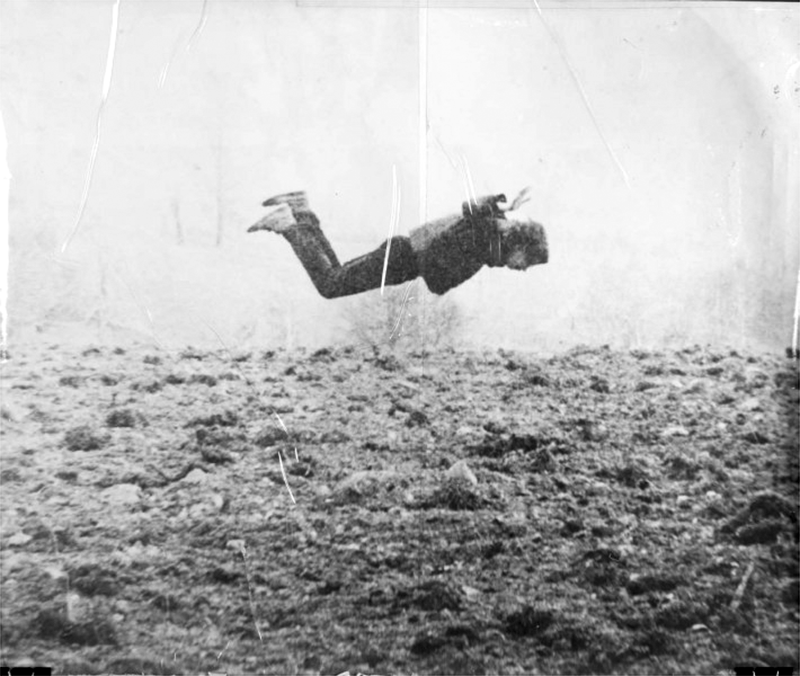
- Let us not begin at the beginning, nor even at the noise. But rather at the word "noise"- and with the noise of so familiar a word.
A break in the continuity
of something.
Something that causes a stoppage
or break in the continuity
of something.
Dishonest or illegal behavior,
especially by powerful people.
DEPRAVITY
Inducement to wrong by improper
or unlawful means (bribery)
Breaking apart,
the state of being broken apart.
A breach of peaceful
or friendly relations.
*specifically* open hostility
or war between nations.
*French* A deficiency in amount,
a temporary lack of material
that prevents from
providing the demand.
An organism that lives on
or in an organism of another
species, known as the host,
from the body of which
it obtains nutriment.

- Noise can be parasitic.
- Noise interrupts, corrupts, creates a rupture.
- It does not necessarily mean sound.
- Interruption = tactic/tool to cease power.
- Censorship can be a form of noise.
Technical limitations
Under certain conditions it may be necessary to publish content without leaving a trace of identity behind. To protect the contributors and server locations also means working with some technical limitations. In our project, this boiled down to facing reduced bandwidth speed when accessing websites, hosted in the Dark Web through the Tor Browser, and also because of the necessity of implementing a static website.
It makes no sense to try and work against these restrictions. Rather, we accept and find ways to work within the limitations. A clearly defined field of work can also speed up and enrich the process.
Dark Web
The Dark Web is a portion of the Internet that one cannot reach by the use of regular search engines. Users need specific software, configurations or authorization to access and to be able to use it. This shelter of anonymity is fundamental fordealing with censorship and privacy concerns. Because of this, the Dark Web is often perceived as a haven for criminal activities. Tor Browser is probably the tool most used to access the Dark Web.
The Dark Web offers the protective layers that guarantee the location of servers and the identity of users is secure in case of possible attempts of persecution of any kind.
Tor Browser
Using the Tor Browser helps prevent others from tracking your browsing behavior and user details like location. It is provided by the Tor Project, a non-profit organization. It works by routing all your internet traffic trough random nodes, listed in the Tor network and thus rendering the origin of it unrecognizable.
It is probably the most famous tool used to access the Dark Web.
everywhere, always, online
somewhere, sometimes, offline
nowhere, never, online
Tor Setup Manual
The "Rat" is always interrupted
Always the same,
as in character or degree;
Lack of diversity or variation.
- Uniformity, mass production, and standardisation, limit the fair distribution of resources (communicating resources).
*from greek* poly
+ phōnē speech.
Music with two
or more
independent melodic parts
sounded together.
- Having a multitude of perpectives on a subject obviously broadens your understanding of it.
- Here, the parasitic noise interrupts the feast, just like noise can interrupt communication between people.
- Noise, when it interrupts, parasites, implies a hierarchy, a dependency.
- It can narrow and withhold messages, distort others.
The act of twisting or altering
something out of its true, natural,
or original state.
A distortion of the facts.
- Information-washing of the dominant class is the distortion, the long-term static noise.
- A class of people. The "white collar criminals", generating their own order.
*french*
The word "Imposteur" means both
"tax-collector" and "impostor".
A parasite who has the last word,
who produces disorder and
who generates a different order."
A parasite, living off […] the land.
Industry pillages and plunders:
Such farmer is a part of a matrix.

The cultural, social, or political
environment in which
something develops.
A situation or surrounding
substance within which something
originates, develops, is contained
is the matrix,
the indispensable condition,
of nearly every form of freedom".
- Not being interrupted is coupled with power is a luxury - the "rat" is always interrupted, the "king" never.
- If you are constantly being interrupted, you have to deviate to be heard.
- It segments production.
Thread Model
A threat/thread model is a set of rules that lists and evaluates all the resources and contents of a project before starting to embark on the projects' journey. A threat model sets clear limits that must be respected when working together.
During the process we have implemented a thread model to prevent the unwanted publication and communication of sensitive information.
Raspberry Pi
Raspberry Piis a series of small computers with internal RAM & CPU/GPU and several connectors, like USB or Ethernet. They are being used by a big and diverse community, in education or for all kinds of prototyping projects.
We used them as a low cost web server to store our websites. As a security measure, three similar servers in different, secret locations provide continuous access to the material, serving as alternative hosts, should one of them be taken down or fail. The basic code structure is being created with Python.

Publishing in times of urgency
A structural or behavioral characteristic
peculiar to an individual or group.
Information, ideas, or rumors deliberately
spread widely to help or harm a person,
group, movement, institution, nation, etc.
- Propaganda and censorship as a constant, parasitic noise.
- Constant struggle, a fight for position.
- Relation between information and energy.
- Political urgency.
- Authority controls resources.
- For an oppressor, distortion would be the noise of those who disagree with them.
- Political dissidents create the noise that interrupt the feast of oppressors.
- Resistance movements can generate a counter/ a different order.
- From beyond this point and in this chain, everybody becomes a parasite.
Conflict of interest or non-neutrality.
When Wikipedia administrators/editors
keep going back and fourth
with statements in Wikipedia
due to a lack of source.
This creates a bias towards
statements that align with
the government's views,
since content published by dissidents are stategically and systematically censored
and taken off the internet.
- Sources and references are being deleted, writers being chased after, etc…
- Who gets to articulates the laws? Who articulates the memory of it ? Don’t forget this.
Noise < Redundancy
The abstraction of an idea.
A communication at once
anonymous and personal.
A guiding or warning signal,
as a light or fire.
- Communication through symbols.
- Beacons as means of communication (flags, cross barriers of sound).
- Meaning is produced, information/data is being generated.
- Symbols as the abstraction of an idea.
- The idea that you can understand people without knowing all their codes/languages ?
- through all language barriers ?
- language of many portals = philosophical.
- Symbols change and evolve : Are they part of language or a wander of communication ?
*communication theory*
A measure of the efficiency
of a system
(such as a code or a language)
in transmitting information.
- Meaning is very and must be transmitted in the most thoughtful way to be received in the desired way.
- Multiple communication systems that make up one great machine.
Repetition of linguistic information
inherent in the structure
of a language.
Repetition of parts
or all of a message
to circumvent transmission errors.
Excessive wordiness
or repetition in expression.
- Redundancy in transmitting is a way to reduce noise in a message.
- Market information is most efficient, for its redundancy
A professional who executes
buy and sell orders
for stocks
and other securities
on behalf of clients.
- There may exist at the information source just two possible messages: BUY or SELL.
- If the signal is distorted in such a way as to change SELL to SELF, as there are only two possible messages, BUY and SELL, there is sufficient redundancy in the spelling of the words that even if it did read SELF, the information would still be clear.
2. Re-opening the boxes: echoing subversive thoughts
The redistribution of sensitive, underground or non-commercial archival material

"In a time where it's possible to freely transfer gigabytes of files over a wireless network within a couple of minutes, an archive of sensitive material was brought to us on a USB stick, hidden in a bag which was transported by a human through the air on a 17-hour flight."
2.1 Activating archival material and respreading idea's
2.2 Restabilizing unpublished and forgotten material
2.3 Physical distribution of digital data
2.4 Digital Networking advantages
Key questions in this section:
- What if you can't publish because of political change & censorship?
- What if you are not allowed to publish today what you wrote yesterday?
- What are the possibilities of speeding up the printing and publishing process?
- How can you re-enact(ing) the initial publishing gesture, especially from the importance of underground publishing)?
2.1 Activating archival material and re-spreading idea's: echoes and activation
Audiences emerge –or are being created– when things are being shared. In the act of connecting like-minded individuals lies a possibility for building communities to share ideas. This is easily prone to dishonest capitalist systems and (extractive) business models. Appropriating printed material that was meant to mass-inform a large public should not be kept behind paywalls managed by self-proclaimed owners of the knowledge and the material that transmits it. In a matter of fact, this also goes against the nature of the original purpose of independent and underground publishing.
The technological advantages of today can be used to reconsider and improve underground publishing workflows. For example, the digital state allows easy multiplication of material, networking tools allow real-time and remote collaboration, and all kinds of anonymous distribution and file-sharing possibilities are around before possibly converting it into a physical document. Just like the underground press used to function, but make clever use of the benefits and speed of the digital.
Examples on the impact of alternative press:
As André Breton, one of the founders of the 1920s Surrealist art movement, famously declared: “One publishes to find comrades!” This short statement brilliantly embodies the spirit of early avant-garde publishing, as well as that of independent publishing later in the 20th century. Strictly speaking, the main concern here is neither commercial success, nor the aesthetic purity of the printed experiment, nor even the archiving of works (at least not yet). Rather, this kind of publishing is all about fostering and spreading ideas among like-minded people, through the ‘viral’ communication model so often applied by the alternative press.
Another case in point is the body of work of the Ranters, a radical group which flourished during the second half of the 17th century, with heretical views on religion (if Jesus is in everyone, who needs the Church?), politics (expropriation of the rich and collective ownership of property) and sex (preaching an ideal of free love). Such an extremist rebel group (which counted a few thousand followers in London alone) could easily self-publish and distribute its pamphlets. Though such publications were banned and burned, it was much more difficult to destroy an entire printed edition than had been the case with manuscripts, because of the sheer number of copies as well as their widespread distribution – and so some copies survived, a few even to this day.38 The two major political revolutions of the 18th century were both preceded by a frenzy of intellectual self-publishing activity, including a few ‘underground’ bestsellers. In the case of the French Revolution, many of the countless pamphlets produced were sponsored by printers, based on their potential commercial success.(Both excerpts taken from Post-Digital Print: The Mutation of Publishing since 1894 by Alessandro Ludovico)
2.2 Restabilizing unpublished and forgotten material
The networking advantage of digital documents allows it to (re)print unpublished and possibly forgotten material and turn it into physical stable objects. In that way, printing on demand is similar to photocopying and mimeography (stencil printing) from the '80s and '90s. Because these methods were relatively cheap and easy to distribute content, alternative presses, underground and self-publishing flourished and became a popular way to target audiences and sub-cultures.
The fact that many people still choose to own a printed object tells us that a physical copy is still an essential experience to consume information. Paper has some specific qualities and characteristics that are not yet defeated by the benefits of the digital. Print-on-demand services and being able to print documents yourself at home perfectly illustrate our resistance to an all-digital world. We can fold it, cut it up for clippings, draw on it and re-use it for other types of usage. Again, this shows that our entanglement to the physical object can't be put aside just like that.
2.3 Physical Distributing of digital data
While the internet can be used to easily transfer and share data, physical exchanges of digital data are used for all kinds of reasons. Methods such as sneakernets*create a direct relationship between the users, creating an interpersonal human interaction. They are still being used today because of various security considerations that people face. Depending on the underlying purpose, distributing online or via physical storage media, both have advantages and disadvantages.
*Sneakernet is an informal term for the transfer of electronic information by physically moving media such as magnetic tape, floppy disks, optical discs, USB flash drives or external hard drives between computers, rather than transmitting it over a computer network. (source: https://en.wikipedia.org/wiki/Sneakernet )
2.4 Digital Networking advantages
Because of the advantages of publishing online, lots of publishers still only sell hard copies of releases due to reasons such as nostalgic motives, political statements against the 'everywhere always online' omnipresence of our current society, or because they want to control the appearance of their product. In addition to satisfying our reading habits, editions can be collectible because of their physical characteristics such as printing techniques, book design, layout, binding, choice of paper, special finishing, etc.
These choices affect how we read, receive the message and value it. Although the possibilities of professional printing and finishing techniques are getting more accessible due to technological development, they are often limited in customization and design options as they are marketed as practical solutions for the office environment.

Corpora Viva
Decay is the only reality, the only true state or condition.
Must we "accept" the inevitable decay?
When ideas decay, history is boud to repeat itself.
An idea must be embodied, to be externalized to be passed onto different levels and states. Does the decay of the body necessarily lead to the decay of the thought? How do you counter the loss — or censorship — of the materiality that constitutes a body.
You can’t prevent a body from decaying, but you can engage in the perpetuation of its the intellect.
Intellect can remain through other bodies.
Intellect can be recorded, can be documented.
How can a soul remain when it is substracted from its body?

Virgil, The Aeneid, VIII 483-88.
- This is not fiction, it is a historical memory.
- This outlandishly atrocious form of punishment was first attributed to Mezentius, the Etruscan King.
- A myth being continued in its cruelty.
- It is horrific, but also kind of beautiful - why?
- Perfectly aligned, symmetrically.
A seemingly magical power or process of transmuting.
- Link between the body and the soul > your body will be rotting in the same way as your soul.
The death or decay of body tissue.
The result of loss of blood supply or trauma.
- Decay is the only reality, the only true state or condition.
- Must we "accept" the inevitable decay?

Division of labor
At several different moments during the process we have divided upcoming tasks to individuals or groups. Right after the first contact with the archival material, we split it up into ten equal parts. Each individual had to deal with their part, while obeying the collective structure of categories and properties that we defined collectively. Later on in the process, we split the class of ten people into two sub-groups: one caring for the actual archive, while the other worked on the public website (that you are currently lurking at) and a printed publication. Within these sub-groups, specific tasks were further divided between the individuals.
The crucial importance for this approach are regular live meetings with the entire team, where catching-up and exchange of information happens. Of a big significance are also platforms on which we document progress. Do eveything you can to keep in contact with the work of other people.
Collecting references
When developing the structure, form and function of the publication, it was essential to collect references. For inspiration, but also to communicate complex ideas in a team. Very helpful were lectures and discussions with Maydayroom, The Warp and Weft of Memory and OpenSourcePublishing.
GIT
GIT is a version-based online data storage service that is used mostly to collectively work on code. This collaborative working environment retains all versions created, it is non-destructive. It also features the option of dividing a project into different versions, so called branches, which can be processed separately, and merged again afterwards.
SHARING IS CARING
Concerned with abstract thought or subjects, as existence, causality or truth.
Concerned with first principles and ultimate grounds, as being, time or substance.
- The close connections between physical and metaphysical states.
- The soul needs a body to act out.
- Apply this process to any possible idea:
- An idea must be embodied, to be externalized > passing onto different levels and states.
- Mechanisms of how an Idea undergoes the process of decaying.
The power of knowing as distinguished from the power to feel and to will:
The capacity for knowledge.
The capacity for rational thought.
- A soul within a body mended by an intellect.
- Intellect exists in between the states of being and non-being.
- It exists because it is not tied to a bodily existence.
- By expression, it becomes more material.
(/ˈnuːmənɒn/, UK also /ˈnaʊ-/; from Greek: νoούμενον)
*metaphysics* a posited object or event that exists independently of human sense and/or perception.
Noumenon is generally used when contrasted with, or in relation to, the term phenomenon,
which refers to anything that can be apprehended by or is an object of the senses.
- Is the Noumenon a phenomenon without a body?
- Something that remains as a memory? As history?
- Consciousness ?
- What is the ontological link between the archive and these ideas?
- The decay of the material, the decay of the body.
- Does the decay of the body necessarily lead to the decay of the thought?
"Taking away"
from ἀπό apo, "away" and αἱρέω haireo, "to take"
- Censorship. Blurring out the lines > focused more on the materiality, the body.
- Intellect can remain through other bodies.
- Intellect can be recorded, can be documented.
- Ideas that decay = History repeating itself.
- Does history have to repeat itself?
- You can’t prevent a body from decaying, but how can you engage in the perpetuation of its the intellect?
- Extracting the content from the body, only the intellect survives.
- By archiving, you prolong the cycle of decay. <3
- You want to keep the soul present a bit longer, to have it as a source of knowledge, not to repeat the history too soon.
Ether2HTML
An Etherpad document can be used to collectively work on HTML, CSS and Javascript code, while still seeing a real time preview, using CURL.
We used this method while creating the website you're looking at.
Curl
Curl is a command line tool, that automatically downloads content from a given URL and stores it in a file on your machine.
We used this tool as part of the Ether2HTML method.
Proletarians of the <redacted> unite!

How does the need for emancipatory politics translate into different forms of expression and organization? How can the tangential dynamics of these different forms successfuly align under an overarching moniker, while still maintaining their locality, specificity and urgency? Does the potential of an inclusive communist project need to be reached by overcoming notions such as Marxism, Leninism, Maoism and the like?
If we choose to look at the specific temporal context of <country> between 1972 and 1986, we arrive at an energetic socio-political environment confronted with pervasive forms of oppression. Faced with the contents of the documents of <archive> published during the aforementioned period, the need for undergoing a process of skimming at first and immersion closely after has resulted in a series of questions, curiosities and conceptual sparks.
The following text is an attempt at compiling a series of contrasting socio-political tendencies into a communist narrative, which is latent within most of the <archive>'s material, but fractured in its many forms. These calls for unionizing, redistribution of wealth, and workers’ emancipation – amongst other recurring motifs – are extracted as snippets from distinct documents and stitched together into one piece. Thus, the method of assemblage becomes a helpful framework in mapping the diversity of communist aspirations and of the voices that propagate them. According to <philosopher>, an assemblage "is a multiplicity which is made up of heterogeneous terms and which establishes liaisons, relations between them, across ages, sexes and reigns – different natures. Thus the assemblage’s only unity is that of a co-functioning: it is a symbiosis, a ‘sympathy’. It is never filiations which are important, but alliances, alloys; these are not successions, lines of descent, but contagions, epidemics, the wind."
The quoted paragraphs which this text consists of are not static, but rather, are made to speak to eachother and can be interchanged to break the current order. In no particular order, for now, the story goes like this:
"The term communism may refer to the comprehensive Marxist-Leninist theory of the industrial proletariat or to a future social formation coming after the national democratic and socialist stages of the <nation> revolution.
[…]The <political party> itself consistently declares that it is pursuing a national democratic revolution and not yet a socialist revolution – under the present circumstances of the <country>. Communism is something possible only as a result of a long process of socialist revolution and construction and the defeat of modern imperialism on a world scale.
[…]Should the <political party> be legalized? Should there be a ceasefire between the <insurgent group 1> and the <insurgent group 2>? Should there be a coalition government which includes the revolutionary forces like the <political party>, <insurgent group 1> and the <revolutionary organization>?"
"<Oppressive politician> continues to have a tight grip on the <insurgent group 2>. <Oppressive politician> continues to keep the courts and the sham parliament within the bounds of <possessive pronoun> dictatorial rule. <Oppressive politician> is frantically militarizing local officials and expanding the paramilitary forces. <oppressive politician>'s fake legislature is about to rig up an electoral code to <oppressive politician>'s complete satisfaction. The <government body> is prepared to fix the results of the forthcoming elections."
"<Oppressive politician> on the Air. “My countrymen, we have carefully evaluated concocted information and have definitely established that Communists are behind the attack on the <event>, although I stood to benefit the most from the bombing. We are therefore suspending the <recourse in law>, ordering the raid of the campuses and the arrest of everyone in media, the academe, labor and other organizations who do not believe me, and hence are Commies. Consider this a dress rehearsal for <oppressive government ruling>.”
"The overall human cost of the regime’s economic strategy is staggeringly painful for [the] majority of the people. Inflation, devaluation and wage repression have caused real family incomes to plummet nationwide.
[…]The rising poverty levels were confirmed by the high-powered <international body> “<aid program>” that visited the <country> in <year> and by <news article> in <year> . Both reports, however, bluntly ignored the root cause of widespread poverty because to delve into these would be to expose the massive failure of the <international body>-<international body> experiment in the <country>."
"<Colonizer> Imperialist domination over the <country>, then, is not only limited to controlling the economic and political affairs of the country. It has likewise, made itself felt in our culture specifically thru religious manipulation. Thus as true <religious denominations> we have a very vital role to play in exposing and opposing the anti-people work of such pseudo-religious fronts of <colonizer> Imperialism and <acronym>’s. For it is by looking beyond our personal “salvation” that we realize the <religious scripture> of total, collective and historical liberation. In these days of alarming developments, let us heed God’s call to actively participate in people’s struggle towards a truly <religious denomination> society that is free, democratic, and sovereign."
"<Clerical figure>, <clerical position> of <capital city>, denied yesterday, allegations that the local <religious body> has been infiltrated by radical elements “bent on overthrowing the present regime.”Maintaining that there can be no such group as “<religious denomination> leftists,” the <capital city> <clerical figure> said the specter of the <religious denomination> left has been raised by the government whenever news of major victories against subversive elements isreleased.
[…]<Clerical figure> reiterated that, to <clerical figure>, the term “<religious denomination> Left” is a contradiction in terms. “How can a person who has vowed to follow <god>… be accused of embracing communism when communism is precisely the negation of <god>?"
"It is wrong to insist that communism or a certain religious belief is the main political issue. The few who do so only objectively help the dictatorship. They wittingly and unwittingly join the <colonizer> imperialists and the <oppressive politician> regime in obscuring the real issue confronting the <nation> people today. And that issue of urgent necessity to the people at present is the struggle for national liberation and democracy against the <colonizer>-<oppressive politician> dictatorship."
"… the <nation> revolution can and must break new ground in pursuit of this socialist revolution vision. Storming heaven’s gate may merely abort the future."
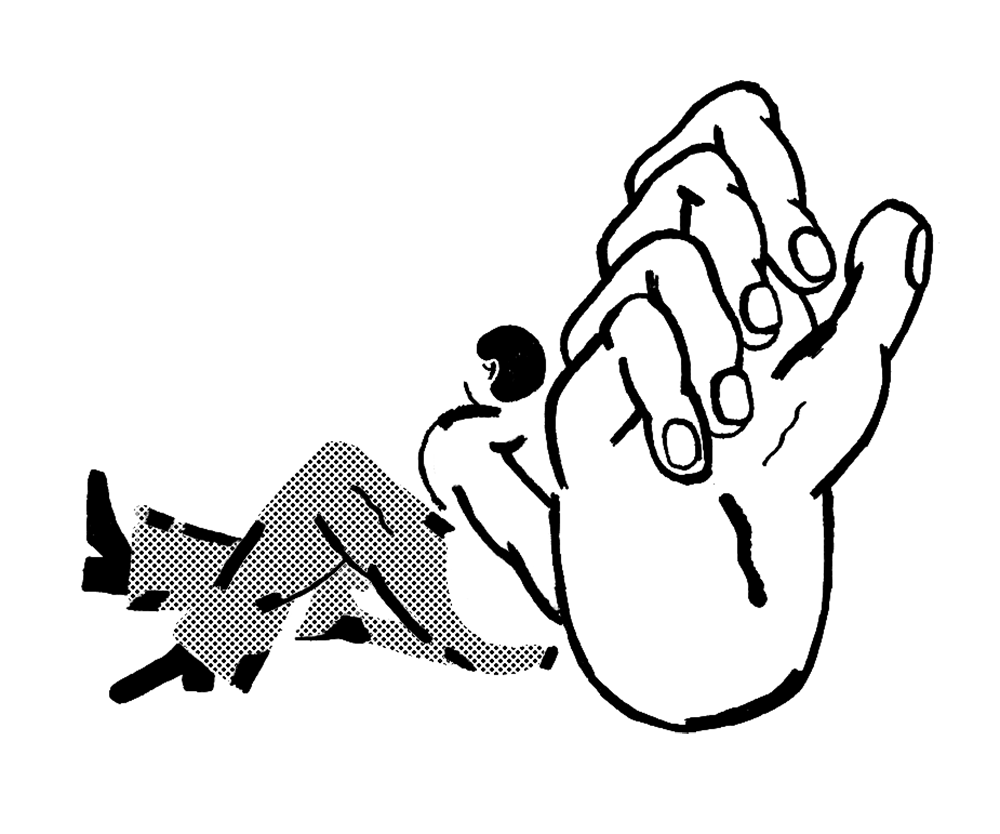
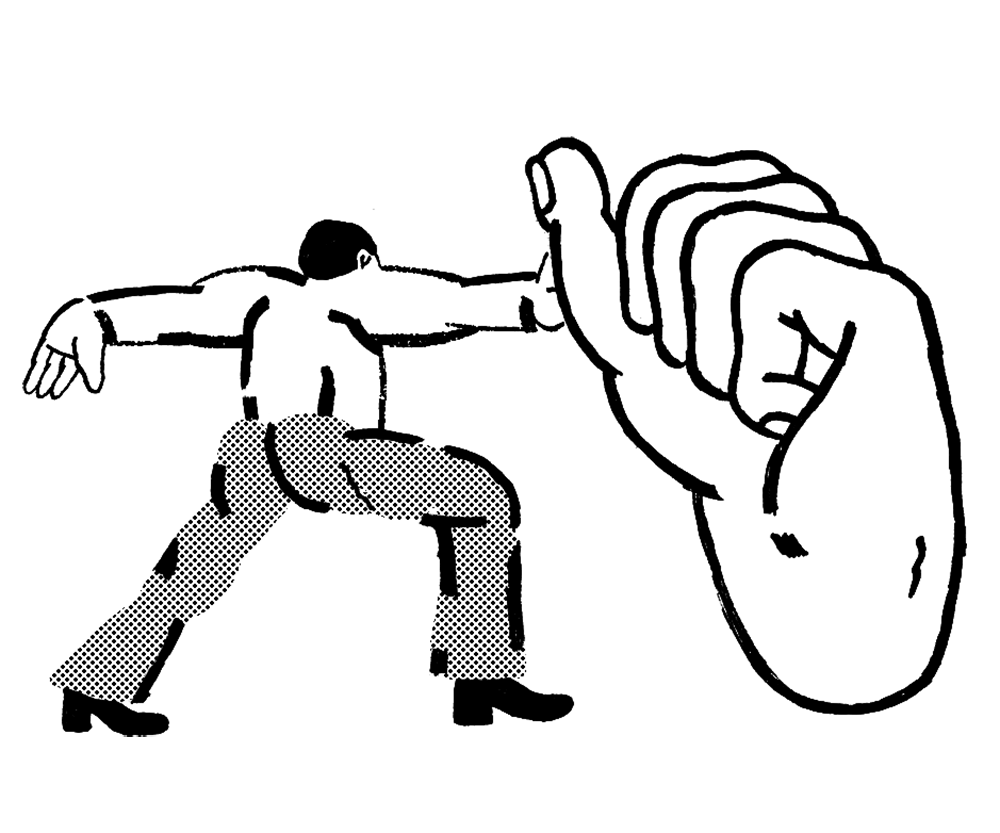
Markdown
Markdown is a markup language.
Markup languages are used to structure the linguistic syntax of a chosen system in a more user-friendly way. These languages are supposed to be easier to use than the actual code, as they are to be read by humans. What is written can easily be converted into the syntax of other languages.
Markdown has been originally developed to simplify writing HTML, but has ever since changed its role and now it provides conversions into different formats.
We used Markdown while creating the annotated readers (SWARM 1,2,3) in order to convert plain text into html.
| ------------- |:-------------:| -----:|
| 3 is | right-aligned | $1600 |
| 2 is | centered | $12 |
| computers | are neat | $1 |
Pandoc
Pandoc is a free command-line tool used to convert one markup format into a different one.
We used Pandoc in the process of converting documents written in markdown into HTML.
HTML, CSS, JS
Hypertext Markup language (HTML) is what the basic building blocks of the web are made of. This language defines and categorizes the content of a website and guides the user, e.g. from one page to another with the use of the so called hyperlinks.
Cascading Style Sheet (CSS) is the visual facade, the makeup that is put on top of the HTML content. It refers to the categories assigned before. It is responsible for how a website looks like and also for basic interactions & animations.
Java Script (JS) is the busy crane-worker that is still around, even after the building is already finished, to rearrange building blocks. Java Script controls interactions, animations, the loading and transformation of content.
These languages can either be written all in one document or in separate ones, linked to one another.
We used HTML, CSS and Java Script to create this website. We used CSS and Java Script to further edit the HTML created with query2HTML.
<style>h1 {color: white; text-align: center;}</style>
<script>document.getElementById("header").innerHTML = "Anonymous publishing";</script>
The first step in the formation of either a new thermodynamic phase or a new structure via self-assembly or self-organization.
- Something new is always made (additive or subtracted)
- Cyclical definitions of the decay.
- The body may putrefy, life continues.
- Organic transmutations between the two bodies.
- Decay is nucleation > Your body feeds the life of the worms.
- Worms (life) are the bridging agents between two bodies, until there is no more separation between the two > complete unison.
Development from the one to the many, the simple to the complex, or the homogeneous to the heterogeneous. *biology* Modification of body parts for performance of particular functions
- Maybe we (as the archivists) are the body that is tied to the other body in decay (the body of material).
- What happens to the soul (content) of the archive when it is distinguished from its body?
- How can a soul remain when it is substracted from its body?
- We are immersing ourselves in the archive.
- Archive immersion, subject yourself to whatever this archive depicts, in order to be able to deal, understand, organise.
- Attaching the "dying" (archive) to a living body.
- To re-associate the dead—or the dying—with the living. With existence.
- Reanimation, reactivation as intrinsic to the act of immersing yourself in, of em"body"ing that knowledge.
- Ideas that are specked-out, fragmentalized in their essence.
- In a process of melting into other specks of ideas, of being.
- Is this the only possibility to survive?
*alchemy* Putrefaction or decomposition.
A first step in the pathway to the philosopher's stone,
all alchemical ingredients had to be cleansed and cooked extensively to a uniform black matter.
*analytical psychology*
The term became a metaphor for "the dark night of the soul,
when an individual confronts the shadow within".
The combining of separate elements or substances to form a coherent whole. The complex whole so formed.
- Synthesising a new substance.
- Boiling down something until it is a black sludge.
- Ideas must be founded on an intensive necrosis and an extensive decay in order to remain in their essence and to synthesize with other Ideas.
- A combination of two bodies > alchemical process that produces the black substance. > the philosopher's stone > eternal life or anything into gold.
Web2Print
Web2Print is a method, that uses websites as a basis from which print layouts are created. When using this online workflow contents are open to a number of contributors, flexible and easy to change throughout the process.
We used Web2Print to enable the printing of the website you're looking at, as well as for the creation of the annotated readers (SWARM) in their physical form.
Annotated reader (SWARM 1,2 & 3)
Using the slow reading method we have read several texts as a group. We have collected annotations, additional information and imagery on an Etherpad. Afterwards, we have collectively revised the collected content, added a glossary, styled it with CSS - designed a cover and designed the overall appearance of it. We have converted it to a print layout using the Ether2HTML and Web2Print methods. Afterwards, we have printed out this material as booklets, which we have named: SWARM 1, 2 & 3.
3. Recipes for a 'post-digital cookbook'
Exploring collaborative forms of publishing subversive content today
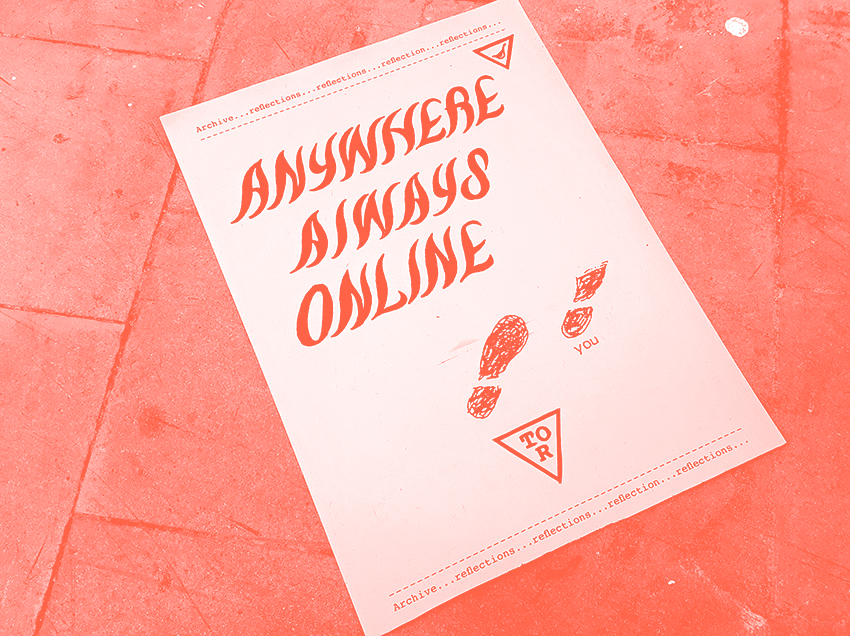
3.1 Collaborative publishing formats
3.2 Providing 'tools' for activation
3.3 The influence of design
3.4 Content and personality
3.6 Digital influence on zines collaborative publishing
3.7 On open tools for collaborative publishing
3.8 Creating hard copies: customising content
3.9 Recources & links
Key questions in this section:
- What collaborative formats can be used to embrace a variety of content?
- What are the benefits of digital publishing combined with printing?
- What are the options for customization of content?
- How to collaborate and publish with others?
- What if this content won't ever be accessible again from tomorrow?
3.1 Collaborative publishing formats
When exploring all kinds of publishing formats and frameworks that embrace various types, styles of content and voices, one inevitably encounters the so-called 'zine' and 'cookbook'. Even though they come in various shapes, both have been used and proven to be a successful form for activating, creating communities, and spreading non-commercial ideas. Ever present as a hearable voice that flows in counter-current to popular opinions and media.
A Cookbook is some kind of handbook with 'recipes' used for DIY and subversive practices with the aim of getting people involved by handing them tools and techniques to use themselves, often within activist and political groups. A Zine is a small-circulation self-published work of original or appropriated texts and images, usually reproduced via a photocopy machine. Zines are the product of either a single person or of a very small group and are popularly photocopied into physical prints for circulation.
3.2 Providing 'tools' for activation
A publication that was, and is still influential today was The Whole Earth Catalog. Published by Stewart Brand regularly between 1968 and 1972, all kinds of informative tools, how-to's, maps, journals, courses, equipment, computers, and even synthesizers, etc. were provided. Brand had a strong ideological motive making all kinds of knowledge accessible. The idea of the publication was focussed on how to guide the reader to become self-reliant. Rather than selling, a large number of products which (were tested and therefore) proved to be qualitative and sustainable were recommended. While the book was strictly speaking confined to being a catalog, it also consisted of experiences, suggestions of readers/users as well as the Catalog's staff. This interaction between publishers and users sharing information made the format of the Whole Earth Catalog a network by itself.
3.3 The influence of design
One notable aspect of alternative press material such as zines and cookbooks is how the design can add a striking 'voice' to a publication. When thinking about old activist documents, a mental image pops up in our heads immediately. Besides the use of illustrations and photography, the design and layout can strongly affect how information is perceived. A layout gives a certain expression to a page; it can emphasize or even contradict the content.
In the current state of home-printing, standardized paper sizes, limited binding options. Home-printing documents are visually often indistinguishable from each other. Same paper color, texts in black ink. The same can be said for digital libraries and how texts are often being displayed on e-readers.
3.4 Content and personality
In the pre-internet world, zines were self-published and distributed publications to target small (obscure) audiences and create a network to like-minded people. To reduce costs, they were often photocopied and distributed physical prints for circulation in sections of Libraries and by mail or alternative bookshops, listed in Zines about zines like Factsheet Five*. The content of zines, sometimes provocative and subversive in nature, are often not found in the mass media. (This culture is pretty much alive today in independent publications from marginal communities of artists, poets, (political) activists, feminists, queers, music genre-specific, etc.)
In 'Perzines' or personal zines, the content was created from intimate stories, anecdotes, comics, photos, and stories about the authors written by others. Often giving the user the feeling to be part of an intimate conversation between close friends. Often designed by using cut-outs and original letters and typewritten documents which added an extra personal layer to the content.
* Factsheet Five was a periodical mostly consisting of short reviews of privately produced printed matter along with contact details of the editors and publishers. In the 1980s and early 1990s, its comprehensive reviews (literally thousands in each issue) made it the most important publication in its field, heralding the wider spread of what would eventually be called fanzine or zine culture. (source: Wikipedia)
3.5 Digital zines
A Zine can be described as a way of thinking. It is a more or less abstract framework that can hold together all kinds of content from different voices and collaborators. It's flexible, adaptive and, curated or not, assembled based on the content. The role the creators and the readers are diffused and interchangeable as interested people are invited to contribute, distribute and make zines themselves. If a zine has many owners, distribution, in both - digital and analog formats, can be un/decentralized, so takedown is less likely to happen and the content manages to live on.
In the early days of online publishing, electronic zines (a well-known one was called 'PDF-Mags') were created by an underground scene of designers to share free content and showcase creative skills. The main purpose of the downloadable PDF's was to share aesthetic experiments and to create be a platform to publish non-commercial content. Although these zines were not interactive at all, they had a networked function: connecting like-minded creatives. In a much quicker way than the traditional printed zines ever allowed, constrained by their physical medium.
3.6 Collaborative publishing tools
Collaborative digital publishing makes use of the possibility of content being continuously updated and added by its numerous creators. Coming from the ideology and culture that believes that software should be open and accessible, free and open-source software (FLOSS) makes possible the creation of custom workflows that enable people to collaborate on writing, designing and publishing. Here, the role of the writer, reader, and publisher becomes even more diffused.
Networked capabilities such as remote printing, anonymous sharing, peer-to-peer distribution, personal customization can have a huge social and political impact as they can reshape the act of publishing subversive content. For example, new workflows can be used for speeding up a process when there is a need for urgent publishing. A real-time peer-reviewed content editing process and co-authorship can 'single-author-knows-it-all-ideology'. And finally, it can be used to target a certain audience for getting a publication into the right hands.
3.7 Creating hard copies: customising content
Another possibility that web-to-print provides is that it allows the user to select, add and modify content to create a personalized printed copy. In the process of printing a selection of the content that fits your interest, assembling and binding a document can result in adding another personal value to the self-printed material. By these means, one can feel more strongly connected to the physical object. as they have directly participated in its creation.
In ‘The Art of Zines’ (Factsheet Five #63, 1998) C. Becker gives an examples on how collective binding methods could function: “The publisher invites contributions and from a few people and each of them sends multiple copies of their work to cover the number of copies in that edition. Each zine copy is then collated and bound making (it) unique, and personalized.”
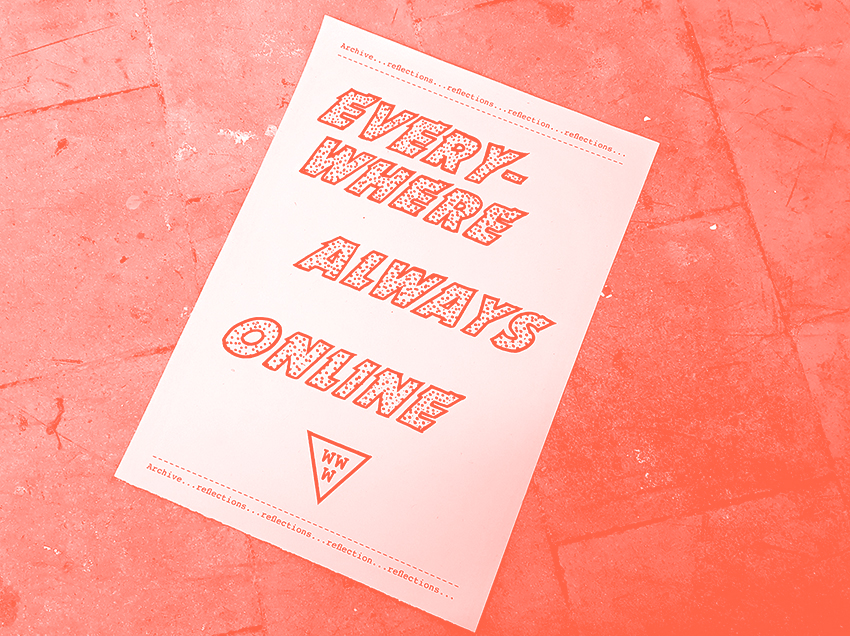
3.8 On distributing physical documents
One may wonder if the more we are getting used to reading digital and volatile screen-based content, the more we have the urge for tactile physical formats. Not only to cater to our reading habits, but also for human connection and interaction it creates. The original gestural act of spreading printed content as a conductor of ideas and information*, using the possibilities of collaboration and distribution that the digital realm provides.
“In this context we view the act of publishing as a gesture that accommodates the political, the artistic, and in some cases, the defiant… A gesture is something preceding the action, and therefore signifies motion and agency of the most expressive and potent kind, precisely because it is so wrought with intentionality.”
(Muller, N. and Ludovico, A. (2008) ‘Of Process and Gestures: A Publishing Act’ in The Mag.net reader 3 - Processual Publishing. Actual Gestures, OpenMute)“
While our trust in print is still pretty much present after all these years of screen reading, we start to experience printed media as slow compared to the online media environment where everything is unsteady and can be constantly updated. As we can see in the changing ways of how we consume news over the past years; with decreasing newspaper sales and the rise of distrust in news.
I personally believe there is a lot to explore in the field of collaborative publishing and what the role of print can be in this. I am in particular curious to what extent or in what situation it is preferable to create physical copies. For me, the methods and tools we used for making this publication gave a whole new insight on how to shape collaborative publishing processes and change more traditional roles for production and distribution. Opening up the process to the extend so that it becomes custumizable for a certain intention, means or strategy to target or create a specific public.
3.9 Resources
Imagine this: tomorrow the internet is down. These hyperlinks below will be inaccessible and therefore useless. All the bookmarks to external references will lead you to blank pages. While the internet seems as a stable way of global communication, its centralized infrastructure is also its weakness.
Mark van den Heuvel, 2020
(Edited by Tisa Neža & Sami Hammama)
https://mashable.com/article/myspace-data-loss/
http://blog.bjrn.se/2020/01/non-realtime-publishing-for-censorship.html
https://en.wikipedia.org/wiki/The_Work_of_Art_in_the_Age_of_Mechanical_Reproduction
https://tlockyer.wordpress.com/2011/07/18/achives-why-digital-needs-physical/
https://monoskop.org/images/0/09/Brand_Stewart_Whole_Earth_Catalog_Fall_1968.pdf
https://monoskop.org/images/a/a6/Ludovico,_Alessandro_-_Post-Digital_Print._The_Mutation_of_Publishing_Since_1894.pdf
https://literariness.org/2018/02/19/analysis-of-derridas-archive-fever/
https://en.wikipedia.org/wiki/Liberation_News_Service
https://en.wikipedia.org/wiki/Factsheet_Five
http://blog.bjrn.se/2020/01/non-realtime-publishing-for-censorship.html
https://tlockyer.wordpress.com/2011/07/18/achives-why-digital-needs-physical/
https://loweringthebar.net/2013/09/google-might-need-to-re-scan-platos-laws.html
http://www.ocopy.net/wp-content/uploads/2016/08/dockray_the-scan-and-the-export.pdf
https://en.wikipedia.org/wiki/Liberation_News_Service
https://en.wikipedia.org/wiki/Whitewashing_(censorship)
https://cloudhesive.com/blog-posts/pentagons-use-of-floppy-disks-probably-safer-than-newer-technologies/
https://en.wikipedia.org/wiki/The_Anarchist_Cookbook
COVID 19
In the midst of the process of dealing with our project, the global society was overwhelmed by the outbreak of the COVID 19 pandemic. Several drastic limitations followed. The most severe impact this situation has had on our project, was of course the closure of all educational facilities and the need for social distancing, to which we complied. This of course resulted in before unknown limitations to our collective process. Due to these circumstances, our launch was provisionally canceled and we were given an extra of two weeks to be able to slow down the process and finish our project.
